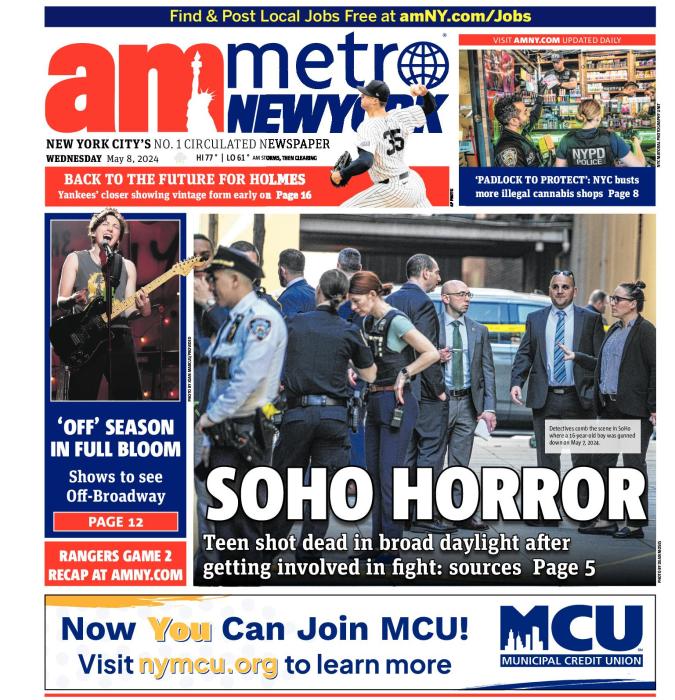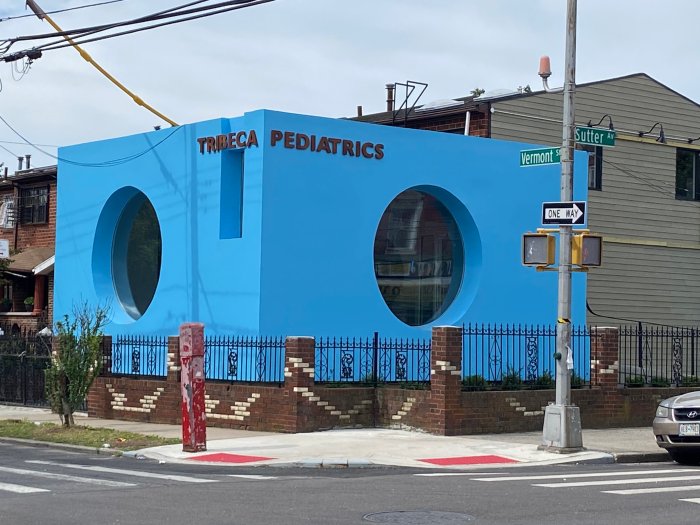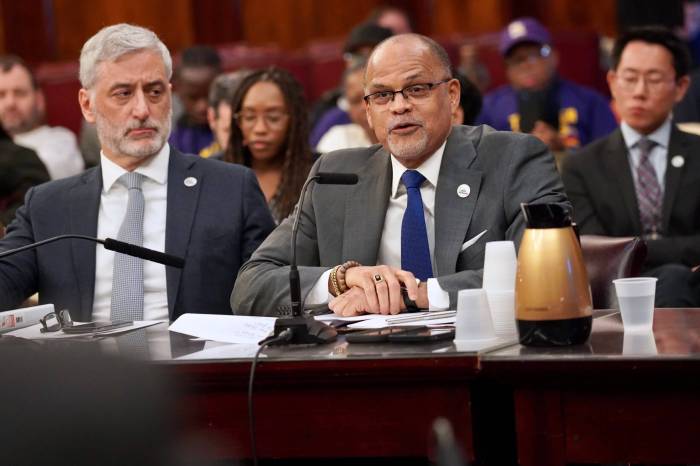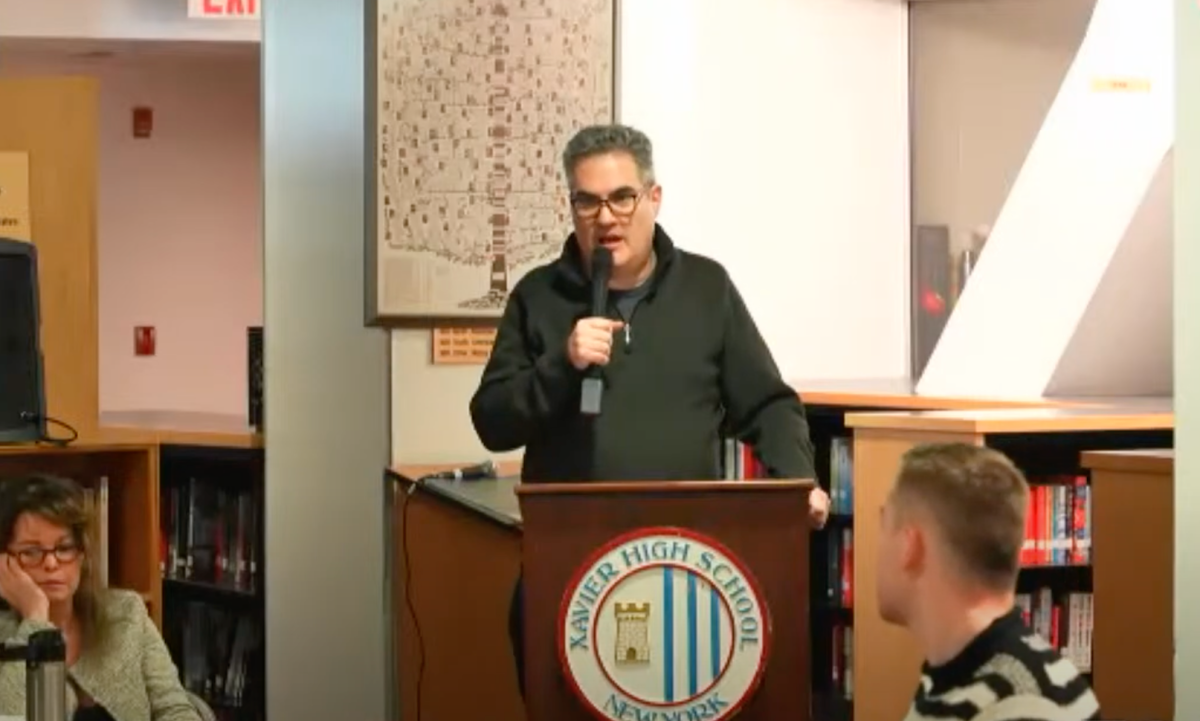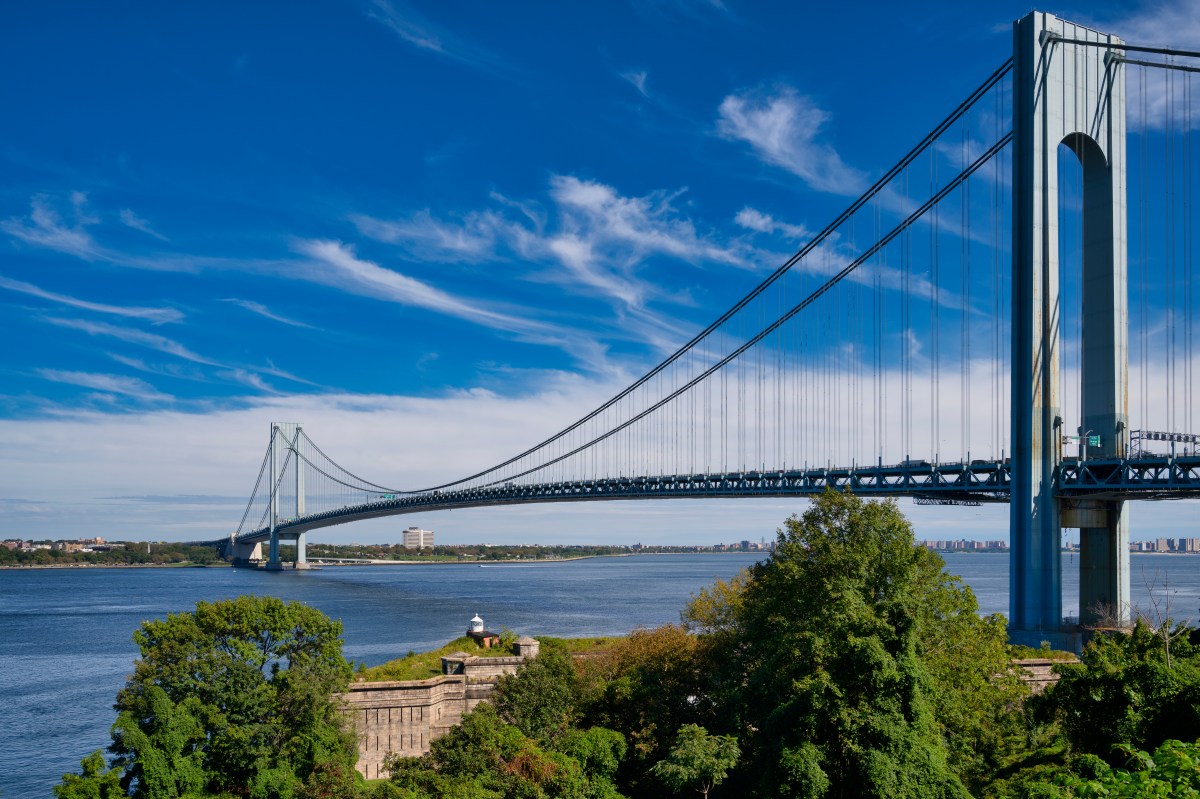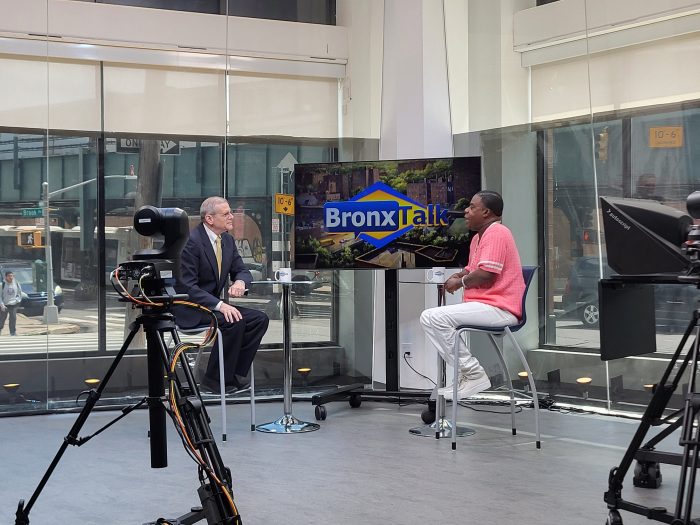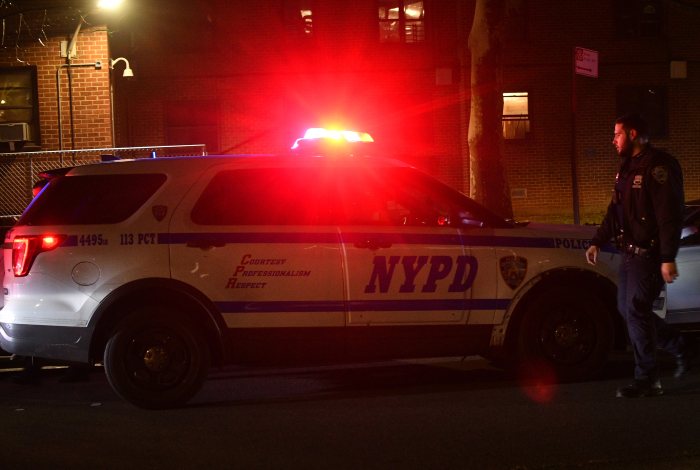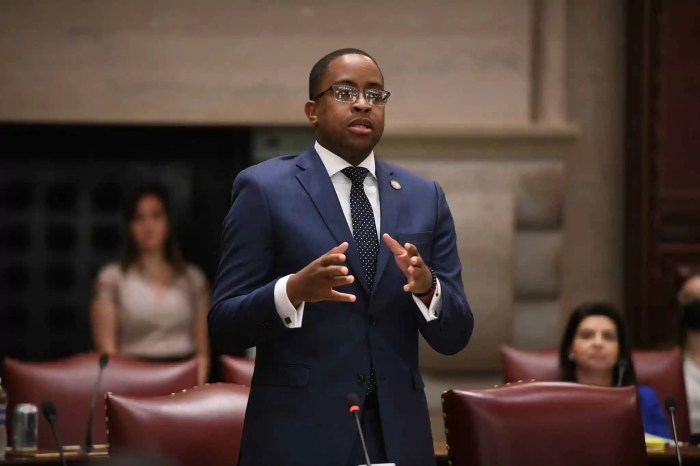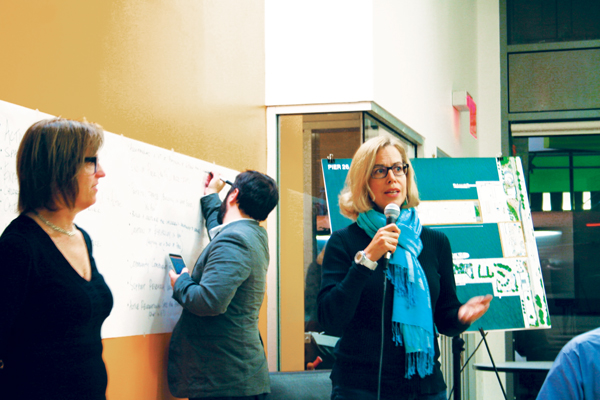
Landscape architect Lucinda Sanders, left, listened to suggestions from Wendy Chapman and dozens of other local residents at a community forum on Oct. 19.
BY YANNIC RACK | Dozens of Tribeca residents turned out this week to give their ideas for the park slated for Pier 26.
“Anything is on the table,” said Madelyn Wils, the president and C.E.O. of the Hudson River Park Trust, at a public forum hosted by the trust and Community Board 1 on Mon., Oct. 19.
Currently no more than a slab of concrete stretching out into the Hudson River between N. Moore and Hubert Sts., the revamped landing will eventually include a 20,000-sq-ft maritime education center and a City Vineyard restaurant — joining the Downtown Boathouse that already offers free kayaking there.
The remainder of the pier will be a public park, and last Monday’s forum was an effort to let local residents help design it — finalizing a plan two decades in the making.
“This is finally the moment that many of us have been waiting for,” said Wils. “I certainly know that I have been waiting for this for over 20 years. And it looks like we’ll be able to move forward with the design for Pier 26.”
The event attracted around 30 local residents to the Downtown Community Center on Warren St., eager to pitch suggestions for facilities and programming at the site.
“The rest of the pier is fair game,” said Lucinda Sanders, the head of OLIN, a landscape architecture firm whose past projects include both Bryant Park and Wagner Park in Battery Park City and was was recently tapped to design the pier’s park.
But Sanders’s remark came with a quick disclaimer from Wils, who noted that there are only about 1.8 acres available on the pier itself and a small stretch between Piers 25 and 26.
“Please realize that we’re going to do our best and get your feedback, but we do have restrictions in the size of this pier. I know that everyone’s hopes and wishes would be for a lot more,” she said.
Suggestions ranged from expanding the play area on nearby Pier 25 and offering water sports, to having research vessels dock at the pier and using wind and solar energy to power the estuarium, the planned riverine research and education complex.
Residents clashed on the question of “active” versus “passive” recreation, with some asking for sports facilities while others wanted open green space that they felt would be more in line with the educational mission of the estuarium.
“I do think that we have to consider that a large portion of our community is families and young kids — the new, emerging Tribeca,” said Elizabeth Lewinsohn, the chairperson of Community Board 1’s Tribeca Committee. “I think a lot of these families will want active recreational space, and we do need to give some thought to it.”
C.B. 1 Andrew Zelter, a father of four who also runs the Downtown Little League, said his 1,100-player league is chronically starved for space and asked to include a baseball field on the pier — but not everyone wanted to play ball.
“We need to teach kids about marine science, not about Babe Ruth. We can’t do it all,” one resident said.
A mother of three said her kids are interested in science but also play sports, so she would like to have it both ways. “The population in this neighborhood, in Downtown, is exploding. We really need both,” she said.
“It wouldn’t be New York if you didn’t ask for that,” Sanders quipped.
Pier 26 was rebuilt with funds from the Lower Manhattan Development Corp. in 2009. The Downtown Boathouse has already returned with its free kayaking program and now occupies the eastern end of the pier. The same building will house the City Vineyard restaurant, expected to open next summer.
The $20 million estuarium, which will have two floors and cover a 10,000-sq-ft footprint, will be designed pro bono by famed architect Rafael Viñoly.
For almost two decades before Pier 26 was demolished in 2005, the River Project ran a popular estuarium at the site. The group now operates a temproary field station at Pier 40, near W. Houston St., but currently doesn’t have a role in the new estuarium, which will be run by Clarkson University, in Potsdam, N.Y., along with the New York Hall of Science in Queens and the Hudson River sloop Clearwater. Wils said the trust is in discussions with the River Project about playing a role in the new river science center.
The trust recently announced that Citigroup, which is returning its global headquarters to a nearby site on Greenwich St., is contributing $10 million towards the $30 million needed to finish the pier. The trust has also secured $10 million from the city and has applied for an additional grant from the Lower Manhattan Development Corporation.
The pier could be open as soon as late 2018, according to Wils, but she expects to have a design concept ready in just a few months. Asked how a compromise could be reached between active and passive uses, she was vague.
“I won’t say right now, we’re going to have to start designing some concepts,” she said. “But I would like to see that we can make it work for different people.”
